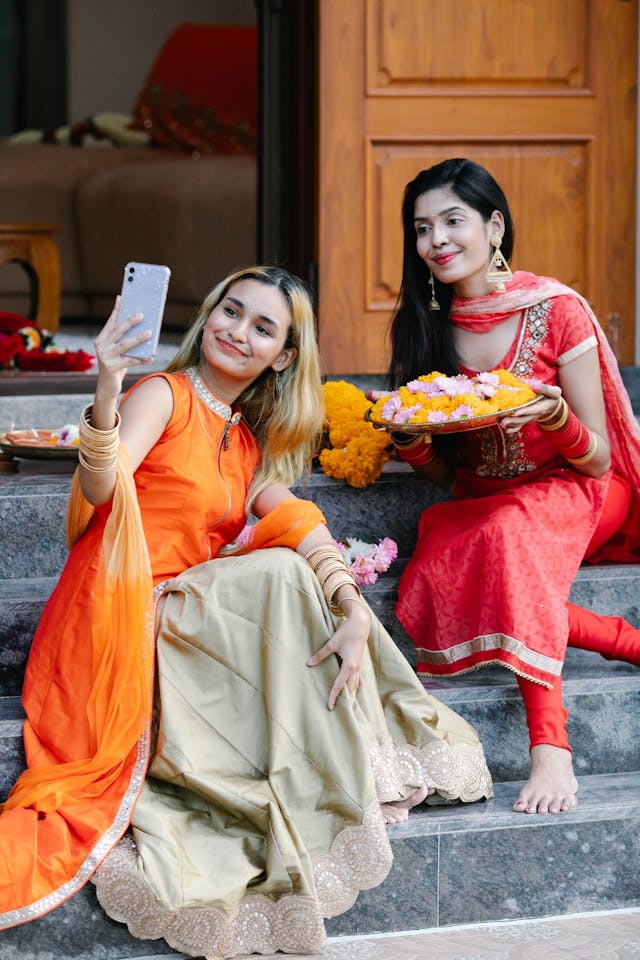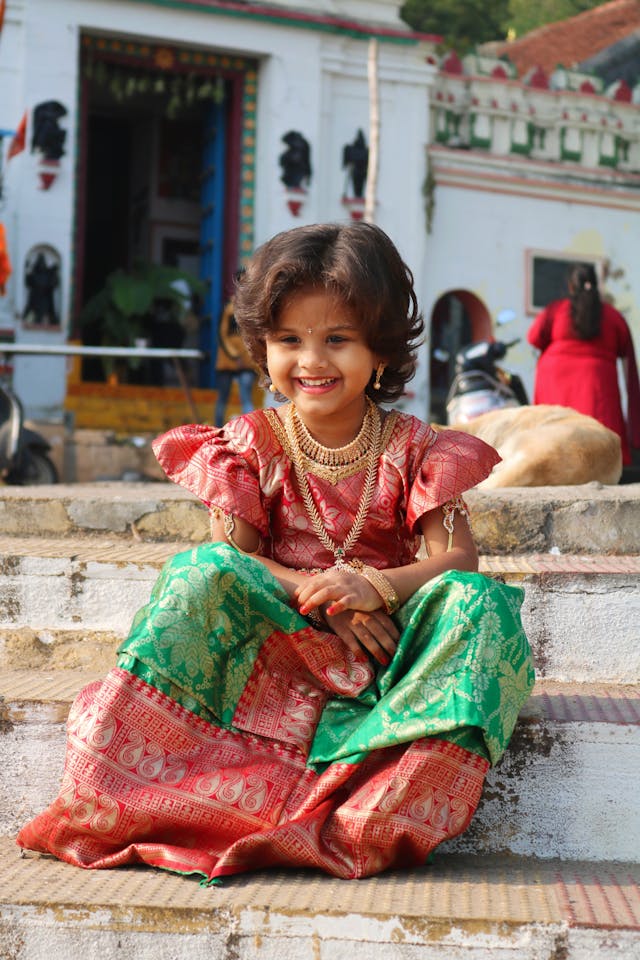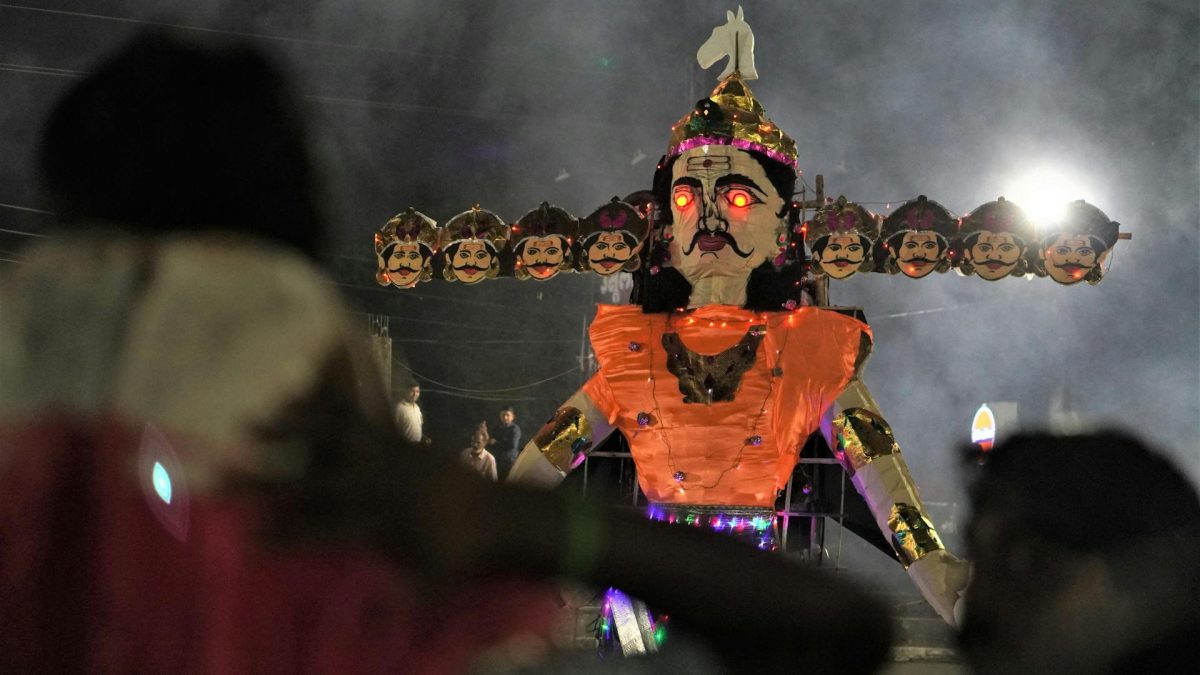Dussehra, a festival celebrating the triumph of good over evil, is an occasion where many women choose to wear traditional and vibrant clothing that reflects the cultural and spiritual significance of the day. Here’s a guide on what to wear and the pooja rituals women can perform during Dussehra:
Traditional Attire for Dussehra:
Women often embrace ethnic wear that highlights the festive spirit. Here are a few outfit suggestions:
- Sarees: A saree, often considered one of the most graceful traditional attires, is a popular choice for Dussehra. Silk sarees, especially those with intricate designs, are perfect for this festival. Kanjivaram, Banarasi, and Tussar silk sarees are some of the popular options that add elegance to the occasion. Red, yellow, and other bright colors symbolize prosperity and are widely worn.
- Lehenga-Choli: For those seeking something more ornate, a lehenga-choli offers a grand look. Embroidered or embellished lehengas paired with a dupatta can make for a festive ensemble, perfect for Dussehra celebrations, especially if you plan to attend religious gatherings.
- Salwar Kameez: For a blend of comfort and tradition, many women prefer salwar kameez or anarkalis. Anarkalis with heavy work or simpler salwar suits in festive colors like orange, gold, or deep reds are appropriate for pooja ceremonies and social gatherings during Dussehra.
- Fusion Wear: For those who want a more contemporary twist, Indo-western outfits like dhoti pants paired with kurtas or ethnic skirts with modern blouses are becoming increasingly popular during festivals like Dussehra. They maintain the cultural essence while adding a modern flair.
- Jewelry and Accessories: Adorning yourself with traditional jewelry is an essential part of festive dressing. Gold jewelry, temple jewelry, and kundan or meenakari sets complement the festive attire. Don’t forget to accessorize with bangles, bindis, and anklets to complete the look.

Pooja Rituals for Women During Dussehra:
Dussehra is a time for both celebrations and religious observances. Women play a key role in performing pooja and seeking blessings for their families. Here are some pooja rituals that women can perform during Dussehra:
- Durga Pooja: Dussehra is closely associated with the worship of Goddess Durga, especially in parts of India where Durga Puja is celebrated. Women can perform Durga Pooja by offering fruits, flowers, and sweets, reciting Durga Chalisa, and lighting diyas to invoke the blessings of the Goddess for health, wealth, and prosperity.
- Ayudha Pooja: In many regions, especially in South India, women perform Ayudha Pooja on the ninth day of Navratri (the day before Dussehra). Tools, instruments, books, and vehicles are worshipped as symbols of prosperity and success. Women clean their homes, decorate tools and instruments with turmeric, kumkum, and flowers, and offer prayers for prosperity.
- Vijayadashami Pooja: On the day of Dussehra, women perform Vijayadashami pooja to mark the victory of Lord Ram over Ravana and the triumph of good over evil. This pooja involves offering special dishes, reciting prayers from the Ramayana, and seeking the blessings of elders and family deities.
- Kanya Pooja: Some women also observe the tradition of Kanya Pooja, where young girls (symbolizing the Goddess Durga) are worshipped. Girls are invited to the home, their feet are washed, they are offered food and gifts, and prayers are recited to honor their purity and divine essence.
- Shami Tree Worship: In certain parts of India, worshipping the Shami tree is an important ritual on Dussehra. Women can visit a Shami tree, offer prayers, and exchange the leaves (known as gold leaves) as a symbol of good fortune.
- Offering Sindoor to the Goddess: Married women can offer sindoor (vermilion) to Goddess Durga and apply it to each other as a mark of devotion and as a prayer for their husbands’ longevity and health.

Symbolism and Spiritual Reflection:
While performing the Dussehra pooja, women can take some time for introspection and meditation. The festival symbolizes the victory of good over evil, reminding everyone to overcome their inner demons like anger, jealousy, and greed.
Women can chant mantras, recite hymns, or simply spend a few moments in silent reflection, seeking spiritual strength and guidance.
Conclusion:
Dussehra is a time for celebration, spirituality, and reflection. While wearing traditional attire adds to the joy of the festival, performing the pooja rituals allows women to connect with their cultural roots and seek divine blessings. Whether it’s through worshipping the Goddess, honoring the tools of daily life, or celebrating the victory of good over evil, Dussehra is an occasion for women to embrace both tradition and festivity in their unique way.
Vamaindia.in hopes that everyone has a wonderful festive season.


